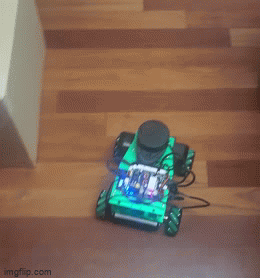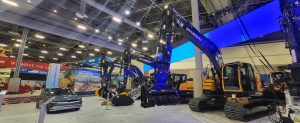Imagine you’re giving your robot friend, Robo, a treasure map to navigate a vast land full of surprises. But wait, how does Robo know where it is on the map? That’s where the magic of Localization Nodes in ROS comes in!

Robo’s Sense of Direction
Localization Nodes act like Robo’s internal GPS, guiding it through the twists and turns of its journey. They help Robo figure out its exact location in the world. So when you say, “You’re right by the big oak tree!” the Localization Node translates that into robot language: “I’m at coordinates X, Y!”
Landmarks as Clues
Robo doesn’t read maps like us; it reads the world through special clues or landmarks. These could be like signposts or unique features—think of them as Robo’s favorite landmarks, guiding it on its adventures.
Avoiding the Lost Robot Blues
Thanks to these clever nodes, Robo doesn’t wander off into the unknown. It always knows where it is, whether exploring a bustling city or a factory maze. No more lost robot woes!
Where Does Localization Fit in Our Lives?

Localization, powered by ROS and its clever nodes, finds its way into various aspects of our daily lives:
- Navigation Assistance: Think of GPS systems in cars or on your phone. Localization principles, similar to those used by robots, guide you to your destination with accuracy.
- Smartphones and Apps: Apps that track your location in a city or help you find nearby places—these use localization technology to pinpoint where you are.
- Indoor Navigation: Ever used maps in large malls or airports on your phone? Localization technology can guide you through these indoor spaces.
- Delivery and Logistics: Delivery services rely on localization for efficient routing and tracking parcels from warehouses to your doorstep.
- Healthcare Devices: Wearable health devices might use localization to track your movements for fitness or health monitoring.
Real-world Applications of Localization Nodes in ROS:
| Industry / Application | Localization Node Usage |
|---|---|
| Autonomous Vehicles | Precise positioning for self-driving cars in urban environments. |
| Warehousing & Logistics | Guiding robots for inventory management and efficient navigation. |
| Augmented Reality (AR) | Overlaying digital information in real-world spaces accurately. |
| Healthcare Robotics | Navigating hospitals for efficient delivery or assistance tasks. |
| Smartphone Navigation Apps | Utilizing GPS and localization for accurate location services. |
| Manufacturing Automation | Ensuring robots move accurately in assembly lines or warehouses. |
Localization Nodes in ROS transcend the world of robots, finding applications in our daily lives across industries, aiding navigation, tracking, and enhancing our interactions with technology and the environment.
Adaptive Monte Carlo Localization (AMCL):
- Probabilistic Approach: AMCL uses probabilities to estimate the robot’s position. It maintains a cloud of hypothetical positions (particles) based on the robot’s motion and sensor measurements.
- Particle Filter: This filter maintains a set of particles, each representing a potential pose (position and orientation) of the robot in the environment. Initially, these particles are randomly distributed.
- Sensor Fusion: As the robot moves and takes sensor measurements (like laser scans or camera data), AMCL updates these particles’ probabilities based on how well their expected sensor readings match the actual sensor measurements. Particles that align closely with sensor data become more likely, while others fade away.
- Adaptability: The “adaptive” aspect of AMCL refers to its ability to dynamically adjust the number of particles and their distribution based on how well they align with the sensor data. It allocates more particles in areas where the robot perceives more uncertainty.
- Convergence: Over time, as the robot moves and collects more sensor data, the particles tend to converge around the robot’s actual position, providing an accurate estimation of its location.
Why is AMCL Important?
AMCL is crucial for robots navigating in unknown or changing environments. It helps them localize themselves accurately, enabling tasks such as mapping, path planning, and navigation. This algorithm allows robots to know where they are relative to their surroundings, a fundamental aspect of autonomy and decision-making in robotics.
Example of Localization Node in ROS:
Let’s imagine a robot navigating a bustling city with a map in hand but not knowing its exact location. That’s where AMCL comes into play!
- Initial Uncertainty: At first, the robot has no idea where it is. AMCL uses a particle filter—a method that creates lots of guesses (particles) about the robot’s location based on its sensors.
- Sensor Input: As the robot moves, its sensors (like cameras or lasers) collect information about the environment. These sensor readings help refine the particles’ guesses.
- Comparing with the Map: AMCL compares these sensor readings with the map it has in its memory. It’s like the robot saying, “I see a big blue building; that matches the map!”
- Refinement and Confidence: The particles that match the sensor readings and the map become stronger, while the wrong ones weaken. Eventually, the particles that agree most with the sensor data pinpoint the robot’s location with high confidence.
Application Scenario:
Consider a delivery robot in a city. Initially, it might not know if it’s near the post office or the library. But as it moves and scans its surroundings, AMCL helps it say, “Ah-ha! I’m right outside the post office!” The robot confidently delivers parcels to the right destinations.
The AMCL Localization Node’s magic lies in narrowing down the possibilities of where the robot could be, helping it accurately locate itself in a complex and changing world.
This example showcases how AMCL, a Localization Node in ROS, enables robots to determine their position within an environment using sensor data and maps, crucial for navigation and performing tasks accurately.

Unveiling Tomorrow’s World with Localization Nodes in ROS
Peering into the world of Localization Nodes within ROS unveils the magic of how robots understand their surroundings—a crucial step toward their independence and intelligence.
Our journey through the depths of Localization Nodes offers only a glimpse of their potential. The future holds countless prospects for this technology across diverse domains, spanning from logistics and healthcare to everyday conveniences.
For enthusiasts and newcomers alike, the quest for knowledge propels progress. At NICE FUTURE INC., we’re not just witnesses; we’re guides and problem-solvers committed to enriching your learning journey.
Join us as we venture deeper into the expansive realm of Localization Nodes within ROS. We’re here to share insights, offer guidance, and provide solutions in the ever-evolving realm of technology.
Together, let’s uncover the boundless possibilities of Localization Nodes, unlocking their power to revolutionize industries and reshape our interaction with robotics. Let’s craft a future where innovation and technology intertwine seamlessly, shaping a world that’s smarter, more efficient, and exceptionally NICE.
Don’t forget to subscribe to our newsletter!




